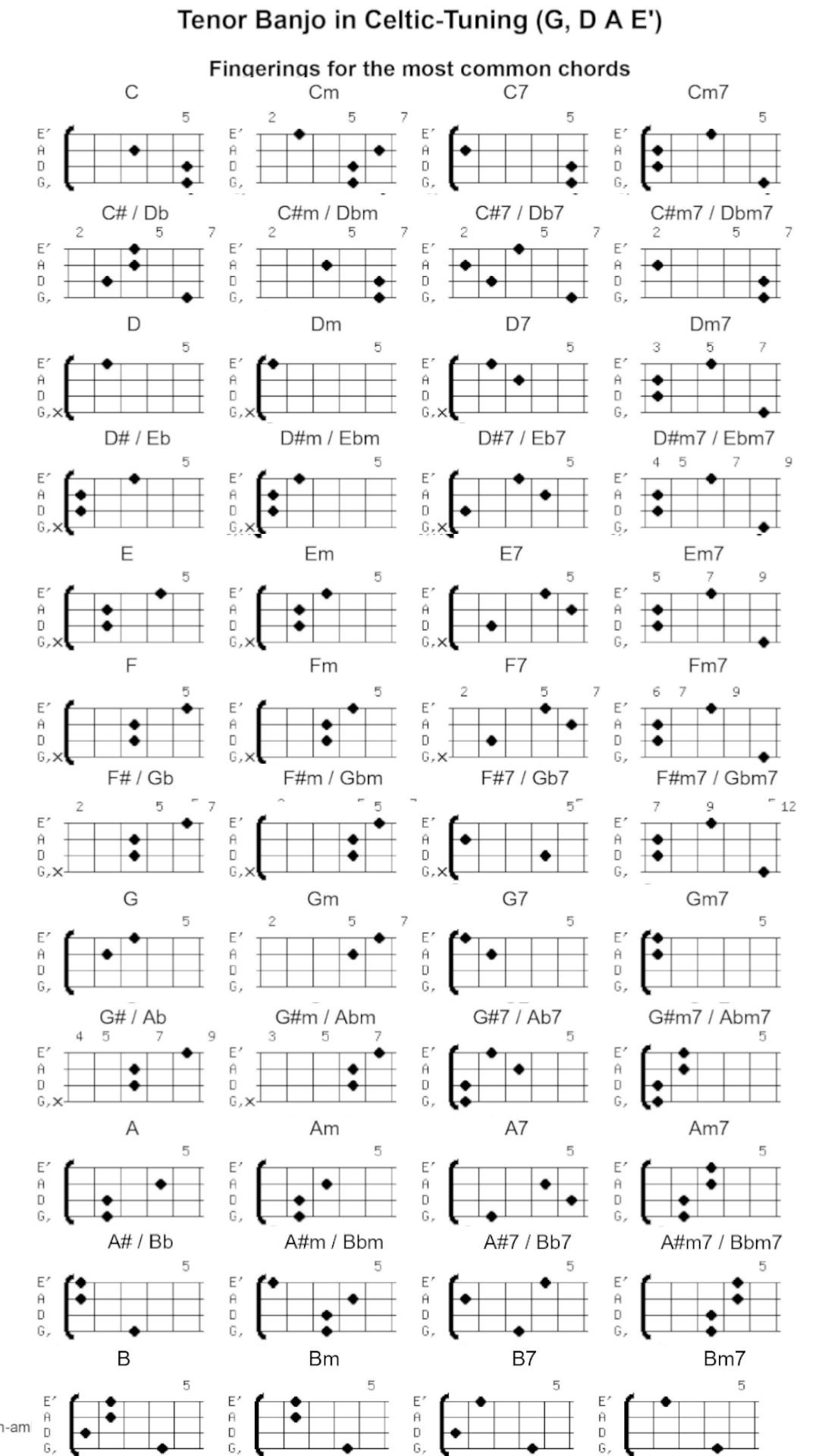

For example, a C9 would also be a dominant 7th chord, but extended to include the 9.

They start off simple enough, with a simple numeric extension:Īnytime you see a number larger than 7, it still means dominant, but extended upward to that number. C7+5 (Dominant 7th with an augmented fifth)ĭominant 7th chords are when the symbols start to get a bit unwieldy.
#List of all chords plus#
The plus sign is pretty universal for augmented chords: Half-diminished chords usually take two forms, either a circle with a slash (cutting it in "half") or spelled out as a minor-7-flat-5 chord.

Minor chords are very similar to major chords, usually with a lowercase "m" or a dash.ĭiminished chords almost always use a circle as their symbol: So, even though you see CM7 notated, if the melody note is C, it usually means C6 anyway. Through tradition, a major-6th chord is automatically substituted whenever you see a major-7th chord notated, and the root is in the melody. There's another kind of major chord used in jazz, the major-6th chord. Use your best judgement in this confusing situation! But in my experience this is also used to indicate that the plain version is intended to be a simple triad. This is ambiguous, and may be done accidentally. * You'll come across a lead sheets which use both a plain C as well as an explicit 7th. It's also quite common to see the major 7th explicitly called for as in the following examples. So, any of those previous examples could also be played as major-7th chords. In jazz, we often make any chord a 7th chord, even if it's not notated as such. Here are the most common ways to notate a basic C major chord: For example, C on its own would imply a C major chord. One of the most common ways major chords are indicated are without any symbol or number. Play whatever you desire and whatever pleases your ear. The lead sheet is a recommendation, not a requirement. For example, turning a Vchord into a ii-V. Inserting new chords in places where the chords are not notated to change. Swapping one chord for another chord of similar function. Even if not notated explicitly, you may choose to include additional notes from the scale, or even altered extensions outside of the scale. There are many ways a jazz musician may deviate from these chords: This gives you freedom and responsibility to use your ear and decide for yourself how you want to play this tune. Unlike classical sheet music, the lead sheet does not literally dictate what you should play. It's different from classical in that these lead sheets provide a skeleton outline to inspire your own playing.

Jazz is the art of improvisation in performance. But, in jazz circles, its common to assume a 7th chord.Ĭhord symbols do not need to be followed literally. If no number is displayed, it classically means to play a triad.


 0 kommentar(er)
0 kommentar(er)
